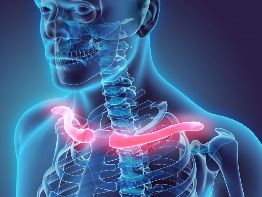Perhaps you are reading this on a mobile or tablet, is the tablet in your lap, is your head hanging right forward?
Tight neck or shoulders?
Do you ever complain of a tight or tired neck, perhaps top of the shoulder? If you do, it is likely that the muscles in your neck, and shoulders, have become long and loose. That tight tiredness is those muscles having to work harder and harder to keep your head up.
Now think about where your head is when you are walking, talking, watching television, on the train looking at the phone, at your workplace either your desk or standing.
The average adult human head weighs between 3.5 to 5.4 kilograms (or 8-12 pounds in old money). Now go and grab a pack of something from your kitchen cupboard, 500g or a kilo of sugar. Heavy isn’t it? That is only a fraction of what your neck is supporting, all day long, imagine holding that pack of something in your hand in the air all day.
Get stacked right.
Stacking the spine in a neutral position, starting at the head, is so vital for spinal health, mobility and stability, and the head has a massive influence over the whole spinal chain. As the head comes forward it is relative weight increases, imagine holding that bag of sugar with your arms bent at right angles and then moving your hands forward an inch or two, it will feel just that little bit heavier. In the heads case, that is an extra five kilograms every inch forward you hold your head.
If the head drops forward the upper back starts to round and often the lumber spine flattens, increasing load where it should not be, similarly if the head is lifted the chest can ‘flare’ out and the curve in the lumbar spine can increase.
Both positions put the spine in an unhealthy position and could lead to chronic pain as the discs are under increased pressure regularly. I have come across this a lot with clients, it is a habit, and we just tend to put up with the aches and pains as a result. It can also lead to problems with balance and stability, and it will undoubtedly impact picking things up from the floor, squatting and lifting.
The solution.
Constant awareness! In all seriousness checking in with your body from time to time is an excellent way to start redressing the balance. When working you can set a timer, if your neck isn’t screaming at you already, or start to build a routine where each time you change position, from sitting to standing, for instance, take a moment to check your head position and do a few gentle movements, do each five times each side:

- Start by really getting your head in position. You can do this by making a slight chicken move by pulling your head up and back and then pushing forward again.
- When your head is up straight slowly and gently rotate to the left and right, your chin should be in line with your clavicle (the bony bit in front of your shoulder).
- When back at the centre keeping your head up tuck your chin into your chest, try not to let your head drop. Then lift your chin, this time don’t let your neck collapse back.
You will likely get some aching feelings at the top of your back or shoulders, as well as in your neck muscles, that’s because you are asking the muscles to start moving in the right pattern!
The key is to do this slowly and focus on your head pivoting right at the top of your spine.
If you get any pain stop, take some deep breaths and see if you can start moving again, DO NOT just push through, if you cannot continue, return to the centre. If pain occurs, try taking gravity out of the equation and try it lying down to see if the pain continues (assuming you were standing or sitting doing this).
There is more that can be done too, and we would start at the top and work down, specifically if the upper back has become tight through prolonged periods of holding the head forward.
I hope this helps take care,
Andrew